Volume 16, Issue 2
Displaying 1-14 of 14 articles from this issue
- |<
- <
- 1
- >
- >|
-
Article type: Cover
2011 Volume 16 Issue 2 Pages Cover1-
Published: May 25, 2011
Released on J-STAGE: July 28, 2017
Download PDF (26230K) -
Article type: Cover
2011 Volume 16 Issue 2 Pages Cover2-
Published: May 25, 2011
Released on J-STAGE: July 28, 2017
Download PDF (26230K) -
Article type: Appendix
2011 Volume 16 Issue 2 Pages App1-
Published: May 25, 2011
Released on J-STAGE: July 28, 2017
Download PDF (112K) -
Article type: Article
2011 Volume 16 Issue 2 Pages 59-66
Published: May 25, 2011
Released on J-STAGE: July 28, 2017
Download PDF (1064K) -
Article type: Article
2011 Volume 16 Issue 2 Pages 67-73
Published: May 25, 2011
Released on J-STAGE: July 28, 2017
Download PDF (769K) -
Article type: Article
2011 Volume 16 Issue 2 Pages 75-84
Published: May 25, 2011
Released on J-STAGE: July 28, 2017
Download PDF (1292K) -
Article type: Article
2011 Volume 16 Issue 2 Pages 85-91
Published: May 25, 2011
Released on J-STAGE: July 28, 2017
Download PDF (841K) -
Article type: Article
2011 Volume 16 Issue 2 Pages 93-98
Published: May 25, 2011
Released on J-STAGE: July 28, 2017
Download PDF (678K) -
Article type: Article
2011 Volume 16 Issue 2 Pages 99-102
Published: May 25, 2011
Released on J-STAGE: July 28, 2017
Download PDF (427K) -
Article type: Appendix
2011 Volume 16 Issue 2 Pages App2-
Published: May 25, 2011
Released on J-STAGE: July 28, 2017
Download PDF (41K) -
Article type: Appendix
2011 Volume 16 Issue 2 Pages App3-
Published: May 25, 2011
Released on J-STAGE: July 28, 2017
Download PDF (41K) -
Article type: Appendix
2011 Volume 16 Issue 2 Pages App4-
Published: May 25, 2011
Released on J-STAGE: July 28, 2017
Download PDF (41K) -
Article type: Cover
2011 Volume 16 Issue 2 Pages Cover3-
Published: May 25, 2011
Released on J-STAGE: July 28, 2017
Download PDF (33K) -
Article type: Cover
2011 Volume 16 Issue 2 Pages Cover4-
Published: May 25, 2011
Released on J-STAGE: July 28, 2017
Download PDF (33K)
- |<
- <
- 1
- >
- >|
